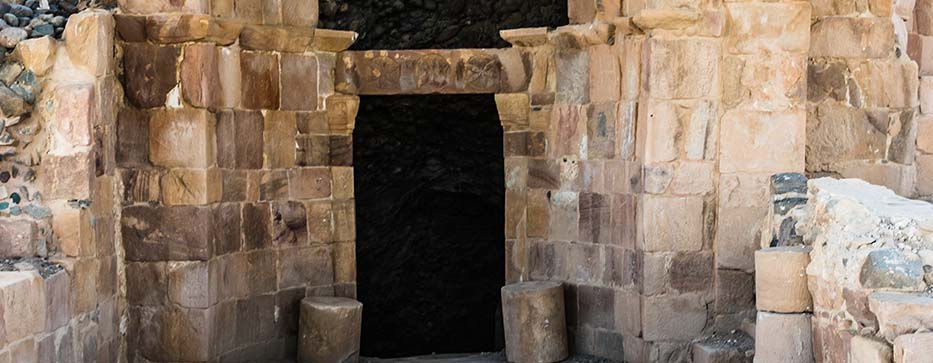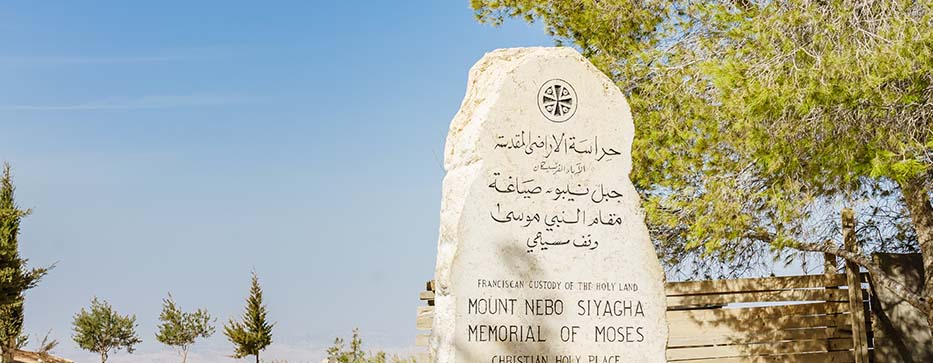The holiest sites for Judaism are in Israel, not surprisingly, as well as in the Palestinian Territories. However, in neighboring Jordan there are also important sacred spaces for this religion, which can be visited by any traveler, whether they are Jews, profess another religion or simply feel interested in this important cultural aspect of the area. On this page we tell you which are the main Jewish places in Jordan, where they are located and how you can include them in your circuit.
The state of Israel was created in 1947-48, after World War II, fulfilling the desire of the Jewish people to have a modern state of their own, since until then all its members were scattered in different countries around the world. Since then, in the following years and decades, the movement known as
Aliyah
led to mass immigration to this new state, reaching about 9 million inhabitants today.
The creation of the state of Israel generated controversy, conflicts and instability in the area, as is known, largely due to the lack of agreement on the establishment of borders (although part of the Arab population resists even the recognition of Israel as a state). Those borders were based on the geographical references contained in the Torah, which is what is traditionally considered the Land of Israel, coinciding.
roughly
with the historical kingdoms of Judah and Israel.
In any case, such a disagreement over borders does not exist with Jordan. At least since the 1994 peace treaty between the two countries, when the current territorial limits were agreed. Indeed, as described in different passages of the Torah and Nevi’im (Numbers 34:1-12 and Ezekiel 47:15-20), the Land of Israel would not encompass the territory of Jordan, since it establishes as a limit the Jordan River, the Dead Sea and Wadi Araba, mainly.
However, there are important Jewish places in Jordan because some of its prophets passed through here and starred in important episodes described in the sacred texts of Judaism, also accepted in the Christian tradition through the Old Testament of the Bible.
What there is not currently in Jordan is a remarkable Jewish population. Given the proximity of the state of Israel, the natural choice for Hebrew people is to reside in the neighboring country. Moreover, although Jordan has recently played a somewhat mediating role between Israel and Arab countries, the situation can be defined as ‘tense calm’, especially with regard to the management of the Islamic holy sites in Jerusalem, assigned to Jordan in the aforementioned 1994 peace treaty.
It is this situation that perhaps explains the discreet presence of Hebrew symbols in Jordan’s Jewish sites, while references to Christianity are much more visible and noticeable, with churches and memorials included.
This is because those
places are also considered sacred by Christianity
. In some cases, Christian institutions were responsible for restoring and re-valuing the place, often because Byzantine churches were built in those same spaces centuries later.
This is evident in sacred places such as Mount Nebo, whose current appearance responds above all to the reforms of the Franciscan order in the 30s of the twentieth century. But also in other places such as Lot’s Cave, where it is possible to recognize churches among the ruins of the archaeological site.
In addition, since Jewish and Christian prophets are also prophetic in the Qur’an, the Islamic religion also gives a sacred character to some of the places described here (although to a lesser extent than others more symbolic, such as those related to Muhammad), so it is not unusual to meet Muslim pilgrims from time to time.
The proximity of Jordan to the Land of Israel implies that some of the episodes narrated in the sacred texts for Judaism are found here, since its protagonists lived in this territory some of the most transcendental moments of their lives. This is a list with the most significant.

The first of the episodes narrated in the sacred texts that would be framed in Jordan is the devastation of Sodom and Gomorrah, which are believed to have been on the southern shores of the Dead Sea. These two cities were burned with fire and brimstone by Yahweh, as punishment for the sins of their population.
From Sodom Lot (Abraham’s nephew) would have fled with his family, to find refuge in a small cave, beyond the Lizán Peninsula, where he lived with his daughters. On it there are inscriptions (one of them could mention Lot by name) and remains of a Byzantine church, with mosaics.
In his flight, by the way, he would have lost his wife, whom some angels had warned not to look back during the escape. He did not take it into account and, therefore, it was turned into a statue of salt. Today, a rock formation located on top of a hill, near the eastern shore of the Dead Sea, is usually identified with it.

On his return from Egypt, the prophet Moses and the Israelites who followed him reached Mount Nebo, located on the elevations overlooking the Dead Sea, on its Jordanian side. Moses was denied entry to the Promised Land, but he was able to see it from here in the thirteenth century B.C.
And the same can be done today by the traveler, since the panoramic views are truly spectacular. An information panel located at the viewpoint explains what can be seen on a clear day: the Dead Sea, Jerusalem, the Golan Heights, Jericho and the Sea of Galilee or Lake Kineret.
Unable to access the Promised Land, Moses decided to stay in it until the end of his days, so here he died at the age of approximately 120. The exact place of Moses’ death is not known and is the subject of study, so there is no funerary or memorial monument to it.
Also near Mount Nebo, about 2.5 km away, you could find the Moses Spring (there is another place that could also correspond to it, which we explain below): it is a simple rock from which only water gushes on rainy days, marked with simple eucalyptus trees around it.
As we said, there is another possible location for the Moses Spring: a simple natural source from which water flows permanently, located on the outskirts of the town of
Wadi Musa
. In this case, it is signposted with a small construction of three domes, where souvenirs of the place are also sold. Therefore, it is one of the main Jewish places in Jordan.
Let us remember that Moses, on his arrival from Egypt, struck with his rod a rock in search of water with which to give water to his thirsty followers. That miracle could have taken place here, something that centuries later benefited the Nabataeans of
Petra
, since this water was channeled to serve that prosperous city located between canyons.
One of the followers who accompanied Moses on his journey from Egypt was precisely his brother, Aaron. And it is believed, he could have died on Mount Hor (Jbel Harum), a mountain around Wadi Musa and Petra, precisely at the moment when the entourage was passing through here and was able to quench his thirst at the spring.
At present, there is a small construction of Islamic origin (fourteenth century) that marks the possible place of the tomb of Aaron, who has also gone down in history for having been the first high priest of Israel.
The prophet Elijah is another of the characters closely related to this land: two of the Jewish places of Jordan They have it as the protagonist. The first, that of his birth, at the end of the tenth century BC. In the Book of Kings it is indicated that Elijah was originally from Tisbe, in Gilead, which could have been located around
Aljoun
.
On the outskirts of this city, one of the routes of the beautiful Aljoun forest reserve leads to an archaeological site (Mar Elias) where it is believed that Elias could have been born. In this site there are mosaics, reliefs and even remains of a Byzantine church that could have been erected in his honor.
The circle of Elijah’s life also closes in Jordan, in the middle of the ninth century B.C. And he does it precisely in a place full of symbolism: Bethany Beyond the Jordan, that is, very close to the place of Jesus’ baptism.
In this environment, located on the banks of the Jordan River, there is a path that reaches the hill of Elijah (Tell Mar Elias), so called because it is believed that from here the prophet could ascend to heaven in a whirlwind generated by Yahweh. Today, the most recognizable are the remains of a Byzantine church, although in reality it is a common place of pilgrimage for Jews and Muslims, as well as Christians.
As you can see, there are many Jewish places in Jordan. To integrate them into a trip, our agency has circuits of different durations: from a few days to more than a week. The star proposals are the
combined circuits
, which include visits in Israeli territory and in Jordanian territory, reaching places as symbolic as Jerusalem.
However, we also work to measure: if you want to plan a trip that only includes the Jewish places of Jordan, we can take you to all of them, explain their history and importance and book the rest of the necessary services for your circuit. Contact Jordania Exclusiva and configure an unforgettable trip with Judaism as the central axis of the program.
Fill out the form below to receive a free non-binding quote tailor-made by a specialized agency in Jordan.
DMC travel agency specializing in tailor-made trips to Jordan
Mandala Tours, S.L, NIF: B51037471
License: C.I.AN-187782-3